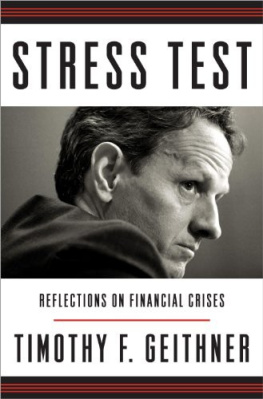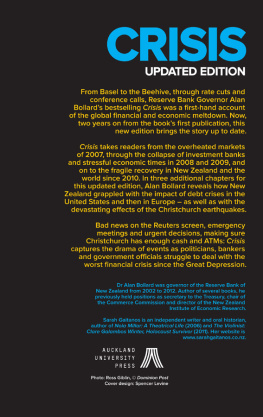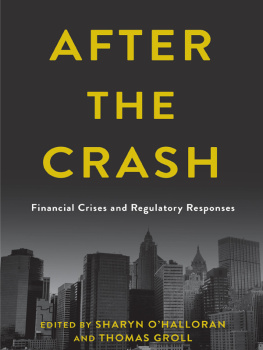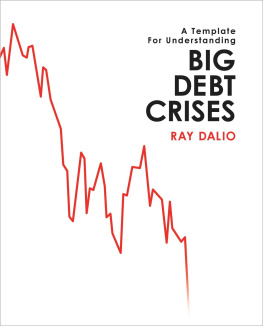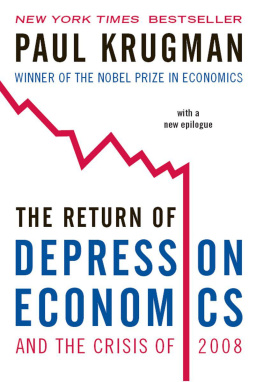Timothy F. Geithner - Stress Test: Reflections on Financial Crises
Here you can read online Timothy F. Geithner - Stress Test: Reflections on Financial Crises full text of the book (entire story) in english for free. Download pdf and epub, get meaning, cover and reviews about this ebook. year: 2014, publisher: Crown, genre: Politics. Description of the work, (preface) as well as reviews are available. Best literature library LitArk.com created for fans of good reading and offers a wide selection of genres:
Romance novel
Science fiction
Adventure
Detective
Science
History
Home and family
Prose
Art
Politics
Computer
Non-fiction
Religion
Business
Children
Humor
Choose a favorite category and find really read worthwhile books. Enjoy immersion in the world of imagination, feel the emotions of the characters or learn something new for yourself, make an fascinating discovery.
- Book:Stress Test: Reflections on Financial Crises
- Author:
- Publisher:Crown
- Genre:
- Year:2014
- Rating:5 / 5
- Favourites:Add to favourites
- Your mark:
Stress Test: Reflections on Financial Crises: summary, description and annotation
We offer to read an annotation, description, summary or preface (depends on what the author of the book "Stress Test: Reflections on Financial Crises" wrote himself). If you haven't found the necessary information about the book — write in the comments, we will try to find it.
Stress Test is the story of Tim Geithners education in financial crises.
As president of the Federal Reserve Bank of New York and then as President Barack Obamas secretary of the Treasury, Timothy F. Geithner helped the United States navigate the worst financial crisis since the Great Depression, from boom to bust to rescue to recovery. In a candid, riveting, and historically illuminating memoir, he takes readers behind the scenes of the crisis, explaining the hard choices and politically unpalatable decisions he made to repair a broken financial system and prevent the collapse of the Main Street economy. This is the inside story of how a small group of policy makersin a thick fog of uncertainty, with unimaginably high stakeshelped avoid a second depression but lost the American people doing it. Stress Test is also a valuable guide to how governments can better manage financial crises, because this one wont be the last.
Stress Test reveals a side of Secretary Geithner the public has never seen, starting with his childhood as an American abroad. He recounts his early days as a young Treasury official helping to fight the international financial crises of the 1990s, then describes what he saw, what he did, and what he missed at the New York Fed before the Wall Street boom went bust. He takes readers inside the room as the crisis began, intensified, and burned out of control, discussing the most controversial episodes of his tenures at the New York Fed and the Treasury, including the rescue of Bear Stearns; the harrowing weekend when Lehman Brothers failed; the searing crucible of the AIG rescue as well as the furor over the firms lavish bonuses; the battles inside the Obama administration over his widely criticized but ultimately successful plan to end the crisis; and the bracing fight for the most sweeping financial reforms in more than seventy years. Secretary Geithner also describes the aftershocks of the crisis, including the administrations efforts to address high unemployment, a series of brutal political battles over deficits and debt, and the drama over Europes repeated flirtations with the economic abyss.
Secretary Geithner is not a politician, but he has things to say about politicsthe silliness, the nastiness, the toll it took on his family. But in the end, Stress Test is a hopeful story about public service. In this revealing memoir, Tim Geithner explains how America withstood the ultimate stress test of its political and financial systems.
Timothy F. Geithner: author's other books
Who wrote Stress Test: Reflections on Financial Crises? Find out the surname, the name of the author of the book and a list of all author's works by series.

